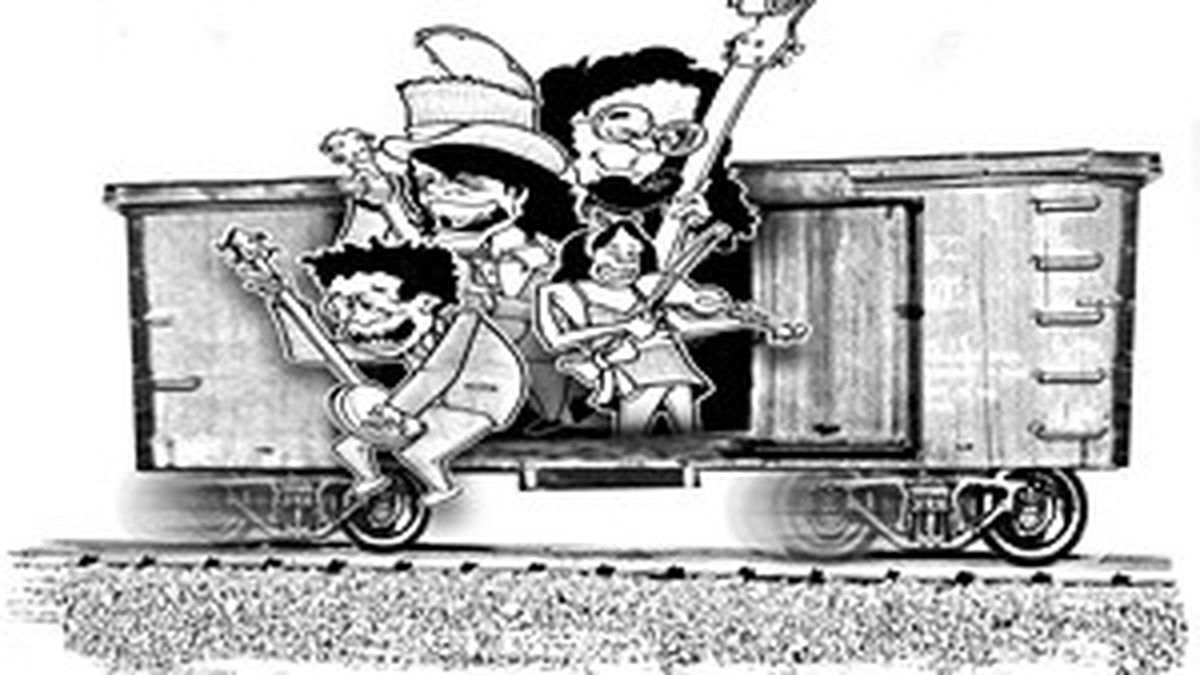Another bus roars by the Cadillac Escalade parked outside my window, triggering the car alarm for the fifth time this hour: Weew! Weew! Weew! Weew! I ponder bashing in its tinted windows, and I suddenly understand exactly what organizer Shelby Ash is talking about when he whispers the words “nostalgia for the country” in reference to the explosion of the San Francisco Bluegrass and Old-Time Festival.
Growing for eight years straight, the festival kicks off Thursday, February 1, promising a record ten nights of performances at fifteen different venues, hosting 36 shows from fifty bluegrass bands, about half of them local. Sixty years after the father of bluegrass Bill Monroe shredded old-timey country music — speeding it up, injecting it with virtuosic solos and his “high lonesome” nasal whine — the genre thrives around the bay.
In contrast to the fancy-pants Hardly Strictly Bluegrass Festival, the Bluegrass and Old-Time Festival hosts its huge annual gathering with just three unpaid staffers and $3,000 up front. At least a third of the crowd is lured by feelings of nostalgia, Ash figures. “A lot of people come to the Bay Area from outside — including Texas and Missouri,” he says. “And I think it’s just music they grew to love. I came from Missouri and I hated bluegrass, but I started listening to it when I got nostalgic for my home in the Ozark mountains. I can appreciate it now.”
The combination of fiddle, banjo, stand-up bass, guitar, mandolin, and four-part harmonies can instantly transport listeners to the O Brother, Where Art Thou? set. Listen to the way Ash describes the square dance at the Swedish American Hall — one of two events that sell out each year. “It’s kind of like walking into some country barn,” he says. “The exposed wood kind of resembles old barns. The people dress up country, wearing old country dresses, overalls, straw hats. It’s a very fun environment. People there are laughing constantly. They don’t care if they’re dancing well or not. It’s all sober and free of alcohol, aside from whatever people drink beforehand. The majority of people are in their twenties and thirties.”
But how can young city-dwellers get wistful for a genre whose roots predate electricity and clean water? Local jam bands helped, says Will Fourt, a 24-year-old San Francisco resident and guitarist with the Five Dollar Suit. The Bay Area quartet has the honor of playing the first set of the entire festival. “People that were into rock ‘n’ roll know the Grateful Dead, and the jam bands turned them onto bluegrass,” he explains. “So they start listening to a band that is jamming and playing bluegrass, and they say, “Oh, that’s cool,’ and it influences them to look into the style.”
Jerry Garcia recorded bluegrass in a short-lived side project called Old and in the Way, whose material can convert listeners on the spot, according to 26-year-old Mayumi Urgino, Five Dollar Suit’s fiddler. The first-generation Filipino American grew up in Indiana playing classical piano and violin, with stints at the Conservatory of Music in Chicago and the Indiana University Orchestra. She switched styles from violin to fiddle last year, about the same time she discovered Old and in the Way and started attending monthly bluegrass jam sessions at the Plough and Stars in San Francisco.
“My parents were like, “What is bluegrass?'” the convert says. “I just played them Old and in the Way. Bluegrass is more free and improvisational. It’s not like reading a piece and playing it exactly how it’s played. It’s more imaginative and creative.”
Bluegrass does come with some pretty tight self-definitions. Drums are out, although ripping off other musicians’ best lines is in. There are standard time signatures, chord progressions, and turnarounds. Most songs seem to be in the key of G. And solos are passed from player to player, jazz-style. It’s all good, though. The rigid rules facilitate tight jamming, Fount says. They also allow for a beginner to play with accomplished players, and for old hands who’ve never even met to kick ass when they get together. “Everyone knows a really common set of material,” he says. “Basically, you’re able to play at a really high level with people who show up who have practiced.”
Yet breaking the rules doesn’t make a bluegrass band less popular, Ash says. The festival’s Alt-Bluegrass show is another perennial sellout. This year’s event (Saturday, February 10 at Cafe du Nord) will include acts that employ cellists, buckets, tin cans, trash cans, and other quirks. “Munly and the Lee Lewis Harlots dresses all in black and sings dark, old-time string band music with two fiddlers,” Ash says. “It’s spooky.”
“That’s the biggest misconception,” Fourt notes. “A lot of people think it’s a joke, that the songs are all meant to be funny or happy; that it’s all upbeat smiling and dancing. If you listen to the lyrics, these songs are horribly sad. They’re all about people dying, losing your lovers, and alcoholism.
“Fundamentally,” he adds, “it’s really about the rural tradition and growing up and moving away from your parents, moving out of the country, and then wishing that you were back in the country. That sort of thing rings true to my life.”
Ringing true yet again, that sonofabitch’s car alarm makes the hills of Kentucky seem like a nice place to be right about now — back porches, cheap whiskey, and nothing to do but take turns soloing with the crickets.












